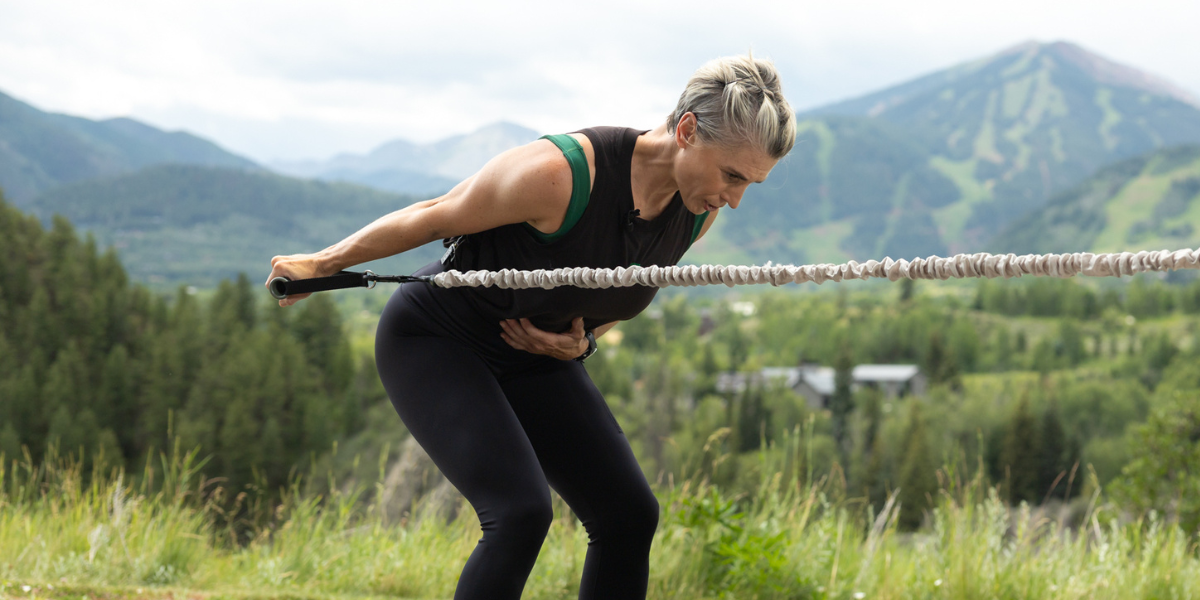We golfers love a good excuse for a bad shot. Blame the wind, the greens, or “something in my shoulder that’s been acting up lately.” But if your shoulder pain is more than just a handy scapegoat, it’s time to pay attention—it might be a rotator cuff injury. Rotator cuff injuries aren’t just for ex-baseball players explaining why they didn’t make the big league. They’re also the leading cause of shoulder pain for golfers. These pesky injuries can pop up after a fall, from overuse, or sometimes just out of the blue. You might be wondering: Why are rotator cuff injuries so common? What are the real underlying issues? The answer: weak rotator cuff muscles, tight shoulders, and poor posture. We’ve got some tips to help you steer clear of rotator cuff injuries, so you can keep blaming the wind for those hooks.
MEET THE MVP OF YOUR SHOULDER
The rotator cuff is a team of four muscles that stabilize and control the ball-and-socket joint of your shoulder. This mighty quartet gives your shoulder incredible range of motion, but it also makes the joint vulnerable to wear and tear. A golf swing might look graceful, but it’s a high-speed, high-impact motion that has the potential to put your rotator cuff under serious strain. That doesn’t mean your favorite pastime is a guaranteed path to injury. With these tips, you can keep your shoulder healthy and stay pain-free on the course.
Work On Shoulder Mobility
When it comes to mobility, golfers usually focus on their hips or spine while overlooking the need to take care of their shoulders. They’re the unsung heroes of your backswing—the trail shoulder needs to rotate outward, while the lead shoulder pulls the arm across the body. Without enough mobility, the rotator cuff can get pinched under the shoulder’s bony roof (the acromioclavicular joint), leading to wear and tear over time.
Try this mobility drill from GolfForever’s app.
Shoulder External Rotation Mobility: 2 sets; 15 reps per arm
Begin lying on your back with your knees bent while holding something sturdy like the Swing Trainer or a golf club.
Start with your elbows bent and out to the side so they are in line with the shoulders and with vertical forearms.
Then, rotate through the shoulder, bringing the hands overhead and the forearms back down toward the floor. Aim to rotate your shoulder enough so that the hands and forearms can rest flat on the floor.
Return to start.
Strengthen the Rotator Cuff Intentionally
Think lifting heavy will toughen up your rotator cuff? Think again. These muscles are built for stability, not bench-press heroics. Cranking up the weight activates bigger muscles like your pecs and delts, sidelining the rotator cuff entirely.
To really build strength in this mighty quartet, stick with lighter weights and controlled movements to target those smaller, stabilizing muscles. Trust us—your shoulders will thank you the next time you unleash a perfect drive down the fairway.
Try this resistance band drill!
Diagonal Shoulder Pulls: 2 sets; 15 reps per arm
Begin standing with resistance tubing safely anchored under one foot.
Hold the tubing in the hand opposite to the foot where the tubing is anchored.
Start with the arm across the body, your thumb pointing back behind you.
Pull the arm forward, upward, and outward on a diagonal line while rotating through the shoulder so the thumb is pointed back behind you.
Slowly lower and return to start.
Work on Posture
Good posture is like a solid foundation—it’s not flashy, but it’s essential. Rounded shoulders or a hunched back add stress to your rotator cuff.
Improving your posture takes more than just trying to sit more upright. A foam roller can help open up your upper back, and exercises focused on the shoulder blade build the strength to keep your posture on point. Bonus: you’ll look taller and more confident strolling onto the green.
Try this upper body mobility and stability exercise as a first step.
Snow Angles on the Foam Roller: 2 sets; 15 reps per side
Begin lying with your back on a foam roller with knees bent and feet flat on the floor.
Place yours arms at your side so that both your shoulders and elbows form a 90-degree angle.
With the elbows bent, lift the arms overhead. Draw the shoulder blades together to return to the starting position.
When Pain Strikes, Rest First
If your shoulder is already yelling at you, pump the brakes. No amount of stretching or strengthening will help if you’re dealing with inflammation or acute pain. Rest is your first line of defense—lay off the golf swings (we know, it hurts to hear) and give your shoulder time to recover.
Once the pain subsides, it’s time to rebuild. Start with the exercises shared above to restore mobility and strengthen your rotator cuff so you can hit the links without fear.
GET BACK (AND STAY) IN THE GAME PAIN-FREE
Shoulder pain doesn’t have to sideline your game. With the right game plan, you can prevent and even fix the problem to come back stronger. That’s where GolfForever shines.
The GolfForever’s App will guide you through an assessment to create a personalized program tailored to your needs. You’ll also gain access to a wealth of injury prevention tips and exercises in the GolfForever Library specifically targeting your rotator cuff muscles.
Don’t let a little shoulder pain steal your joy—or your game. Start building stronger, healthier shoulders today. Why not get started now?

